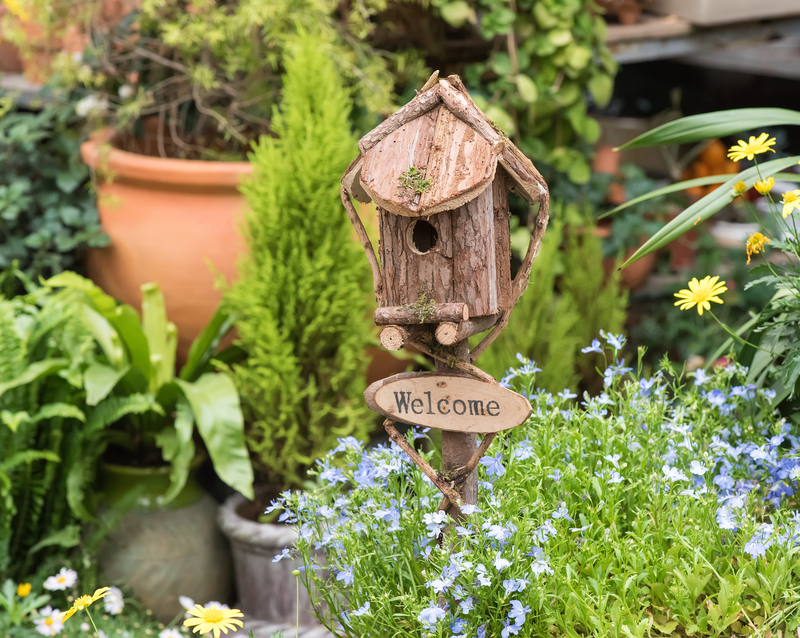How to Prepare Cookware for Recycling Pickup: A Complete Guide
Is your kitchen cluttered with old pots, pans, or baking trays? Wondering what to do with outdated cookware gathering dust in your cabinets? The proper preparation of cookware for recycling pickup is crucial for both the environment and your local waste collection process. In this comprehensive guide, we'll take you through step-by-step instructions on how to prepare various types of cookware for recycling, ensuring that your eco-friendly efforts are effective and hassle-free.

Why Preparing Cookware for Recycling Pickup Matters
Recycling household items is an important way to conserve natural resources and reduce landfill waste. Cookware - such as pots, pans, baking sheets, and skillets - is often made of metals like aluminum, stainless steel, and cast iron, which can be recycled and repurposed. However, cookware cannot simply be tossed into your recycling bin without proper preparation. If not handled correctly, cookware may contaminate recycling loads or damage sorting machinery at recycling facilities.
Environmental Benefits of Cookware Recycling
- Conserves resources: Recycling metal reduces the need for new ore extraction.
- Saves energy: Melting down used metal for reuse requires less energy than refining from raw materials.
- Cuts landfill waste: Old cookware doesn't break down in landfills, so recycling it prevents unnecessary garbage pile-up.
- Reduces pollution: Proper disposal helps avoid hazardous chemicals leaching from non-recyclable coatings.
By understanding how to correctly ready cookware for recycling, you support a cleaner, greener planet and help local recycling processes run smoothly.
Types of Cookware You Can (and Can't) Recycle
Before prepping for pickup, identify which types of cookware are accepted by your local recycling program. This step ensures your efforts go to the right place.
Common Recyclable Cookware
- Stainless Steel Pots and Pans: Highly recyclable, but may require removal of plastic handles or lids.
- Aluminum Cookware: Check for non-stick coatings as some are not accepted.
- Cast Iron Cookware: Very durable and easily melted down for reuse.
- Uncoated Metal Baking Sheets: Most recycling facilities accept plain metal sheets without coatings.
Non-Recyclable Cookware
- Non-Stick (Teflon-Coated) Cookware: These commonly contain chemicals that are not recyclable in regular curbside programs.
- Ceramic-Coated Pans: Difficult to process in metal recycling streams.
- Glass Bakeware: Different formulation than bottles/jars; usually not accepted unless stated.
- Cookware with Composite Materials: Multi-layer or plastic-infused cookware will need special handling.
Pro Tip: When in doubt, call your local recycling center or check their online guidelines about cookware recycling before scheduling a pickup.
Step-By-Step: How to Prepare Cookware for Recycling Pickup
1. Clean Your Cookware Thoroughly
Before your cookware is ready for recycling collection, making sure it's clean is essential. Any leftover grease, food, or burnt residue can contaminate recyclable materials. Follow these tips:
- Wash away all food particles and oils with soap and warm water.
- If there are stubborn residues, scrub with a steel wool pad (for metal cookware) or use a baking soda and vinegar mixture.
- Let cookware dry completely to prevent mold or foul odors in transit.
2. Remove Non-Metal Parts
Many pots and pans have handles, lids, or knobs made from plastic, silicone, wood, or rubber. These materials can disrupt the recycling process. Take the following steps:
- Use a screwdriver or pliers to unscrew and detach any removable plastic or wooden pieces.
- Discard non-metal parts according to local waste regulations, or see if the materials themselves can be recycled.
- Retain only the metal components for recycling -- most programs only accept these parts.
3. Address Coatings and Linings
Many modern pans include non-stick coatings or enamel finishes. Before recycling:
- Check if your local facility accepts non-stick or ceramic-coated cookware; many do not due to complex chemical structures.
- If possible, remove non-stick materials. (Most householders lack the means, so check for alternative drop-off sites or specialist metal recyclers.)
- For completely metal cookware, this step can typically be skipped.
4. Check for Hazardous Elements
Older cookware may contain toxic substances such as lead, cadmium, or PFOA/PFOS (in Teflon). It's vital to research the manufacturer and age of your pans.
- If you suspect hazardous chemicals, do not place the cookware in your regular recycling. Contact your local hazardous waste disposal center for advice.
- Some communities offer designated drop-off events for hazardous kitchen goods.
5. Separate by Material
Metal recycling facilities often sort cookware by type of metal. If you have multiple materials (for example, aluminum and stainless steel), it's helpful to sort them before pickup:
- Group all aluminum together in one box or bag.
- Keep stainless steel items separate from cast iron or copper.
- Label boxes clearly if your recycling guidelines advise.
6. Bundle or Contain Items Safely
Recycling centers appreciate when items are neatly packaged for pickup. This improves efficiency and safety.
- Stack pans inside one another to save space.
- Secure loose lids or handles in a bag or tape them together for easy handling.
- If your cookware is sharp or broken, wrap edges to prevent injury to workers.
- Avoid overfilling bins -- heavy metal cookware can exceed weight limits.
7. Label and Set Out for the Correct Pickup Day
Every municipality has different rules for recycling pickup of large or heavy items like cookware:
- Consult your city's recycling calendar or website for special "bulky metal" collection days.
- If curbside pickup is not available, locate drop-off centers or scrap metal yards nearby.
- Some cities require you to label the box or bin as "metal recycling" or "scrap metal."
By following these preparation strategies, you'll help ensure your unwanted kitchenware is responsibly recycled and doesn't end up in landfills.
Alternative Ways to Dispose of Cookware Sustainably
Some cookware may not be recyclable in your local curbside program, but that doesn't mean it belongs in the trash. Explore these creative and sustainable disposal options:
Donate Usable Cookware
If your cookware is still in reasonable condition, consider donating it:
- Charity shops and thrift stores: Many accept gently used pots and pans.
- Local food banks or shelters: Always check what they need before dropping off.
- Community swap events: Pass on items to someone in need rather than recycling.
Repurpose or Upcycle Old Cookware
- Use old pots as plant containers or garden planters.
- Turn cake pans into organizers for hardware, office supplies, or toys.
- Craft unique art pieces or storage from creative combinations of old kitchenware.
Sell for Scrap Metal
Most metal recycling yards will accept cookware that's entirely metal (aluminum, steel, or cast iron).
- Call ahead to confirm what types they accept
- Some yards pay per pound of metal; it's a great way to earn a few dollars while decluttering.
- Ensure you've removed all plastic, glass, or wooden elements.
Cookware Recycling Pickup: Frequently Asked Questions
Can Non-Stick Cookware Be Recycled with Regular Metal Pickups?
Typically, no. Most non-stick coatings (e.g., Teflon) contain chemicals not accepted in standard metal recycling streams. However, some specialist recycling centers accept them -- search online or ask your municipality for recommendations.
What Should I Do with Broken Glass Bakeware?
Glass bakeware is made from a different material than common glass containers and is not always accepted. Wrap broken or chipped glass carefully and dispose of it according to local waste rules.
How Do I Remove Plastic Handles from Pans?
Most plastic handles are attached with screws. Use a screwdriver and pliers, being careful with tools. If riveted, you may need a drill (or simply note this in your recycling drop-off since some centers can process them as is).
Can I Leave My Cookware at the Curb on Regular Recycling Day?
Always check your city's rules. Many areas require you to schedule a special pickup or take large/heavy metal items to a drop-off facility. Leaving items unannounced could result in them not being collected and even fines in some regions.
How Can I Find a Local Cookware Recycling Program?
Use these resources:
- The website "Earth911" lets you search recycling options by ZIP code and item type.
- Contact your municipality, local waste hauler, or public works department.
- Look for local scrap metal yards or recycling depots that accept household metals.

Key Takeaways: How to Prepare Cookware for Recycling Pickup
Preparing your cookware for recycling not only helps the environment but keeps your home tidy and supports your local recycling facility. Here's a quick checklist for reference:
- Clean all cookware thoroughly before recycling.
- Remove plastic, wooden, glass, or silicone parts.
- Check for coatings or hazardous elements.
- Sort cookware by type of metal (aluminum, stainless steel, cast iron).
- Bundle or package items safely if possible.
- Label containers and confirm with your local recycling rules.
The next time you upgrade or clear out old pans and kitchenware, use these steps to prepare cookware for recycling pickup efficiently and responsibly!
Conclusion: Make Your Cookware Recycling Efforts Count
Old or broken cookware doesn't have to contribute to landfill waste. With the right knowledge and a little preparation, you can ensure that your unwanted kitchen items are disposed of in an environmentally friendly manner. By cleaning, sorting, and bundling cookware for recycling pickup, along with utilizing alternative disposal methods, you play a vital role in sustainable living.
Do your part: prepare your cookware properly for recycling pickup and encourage others to do the same! With these actionable tips, you not only free up space in your kitchen but also help build a cleaner, healthier world.
```